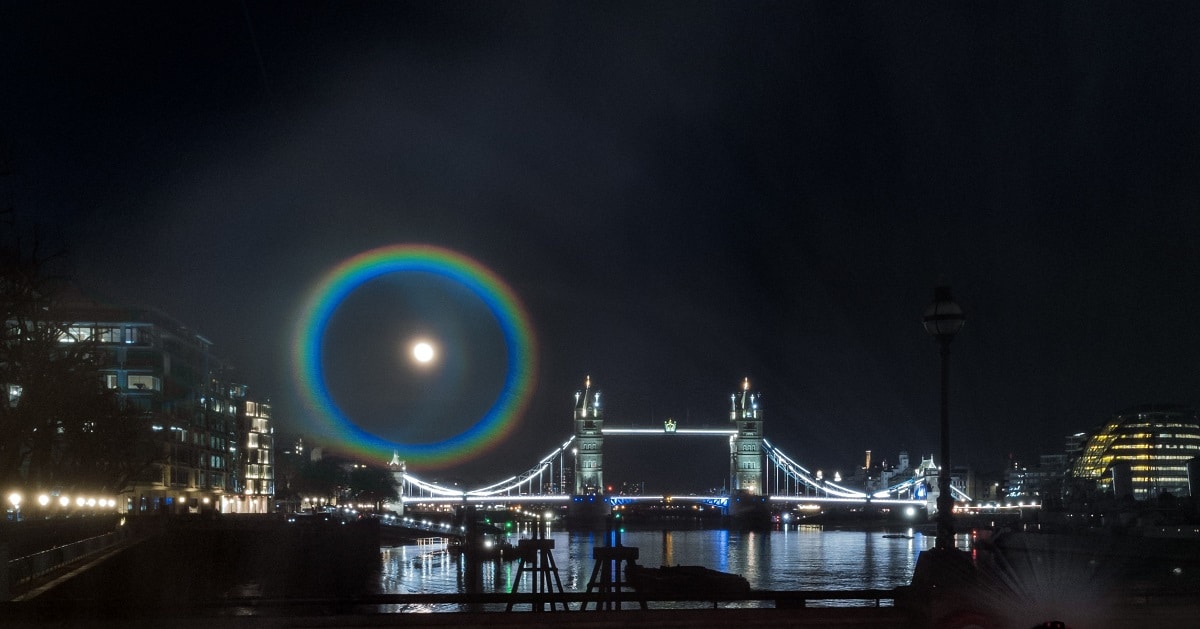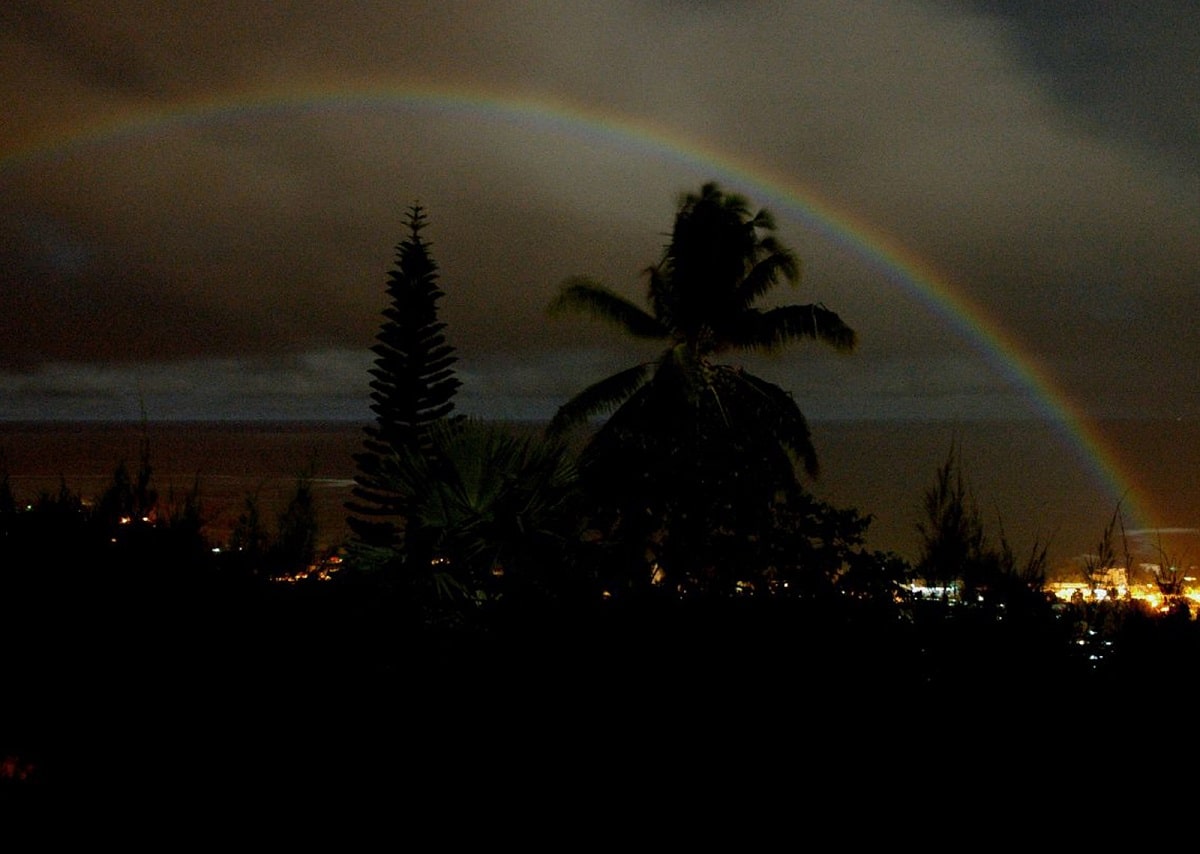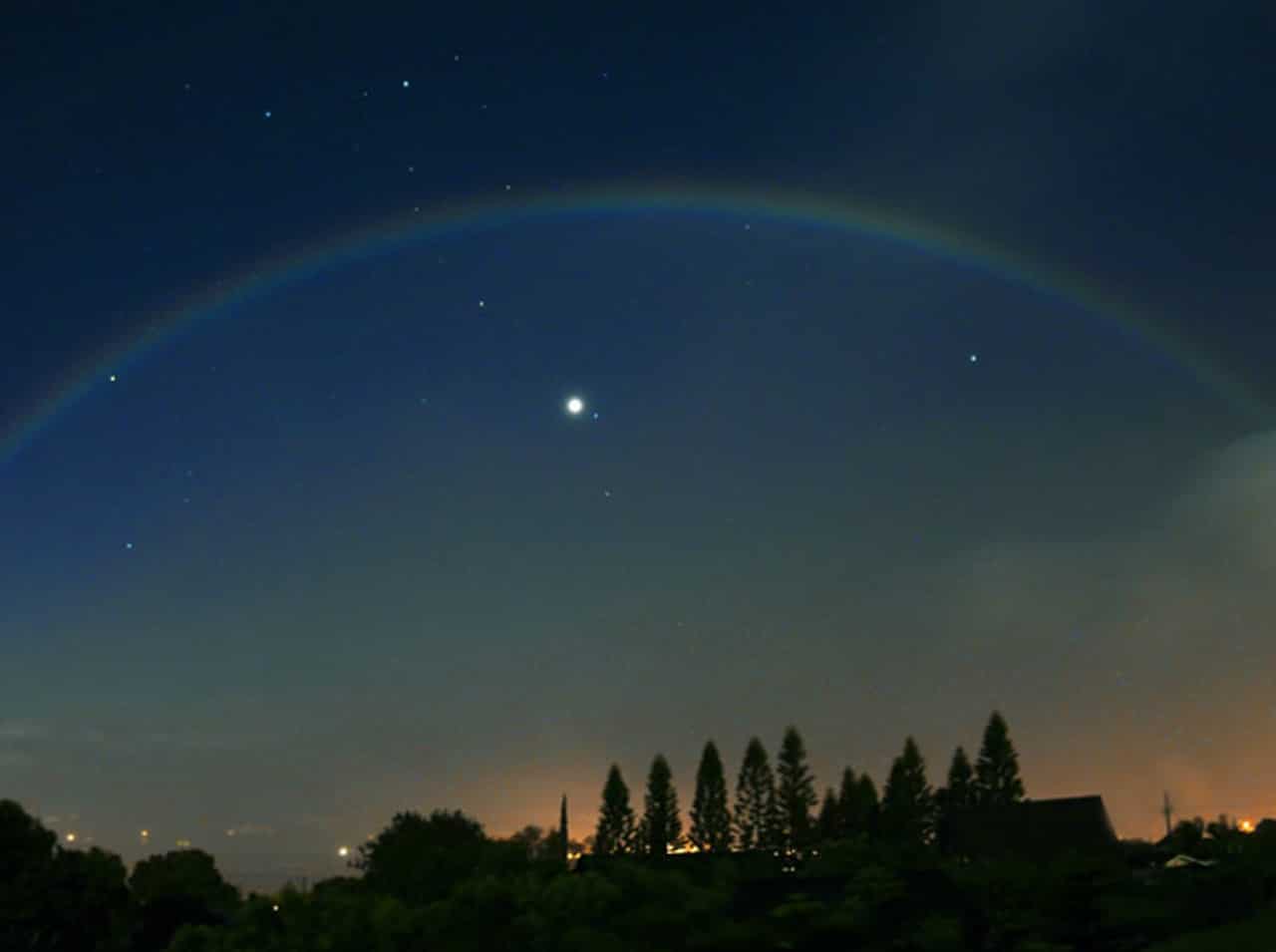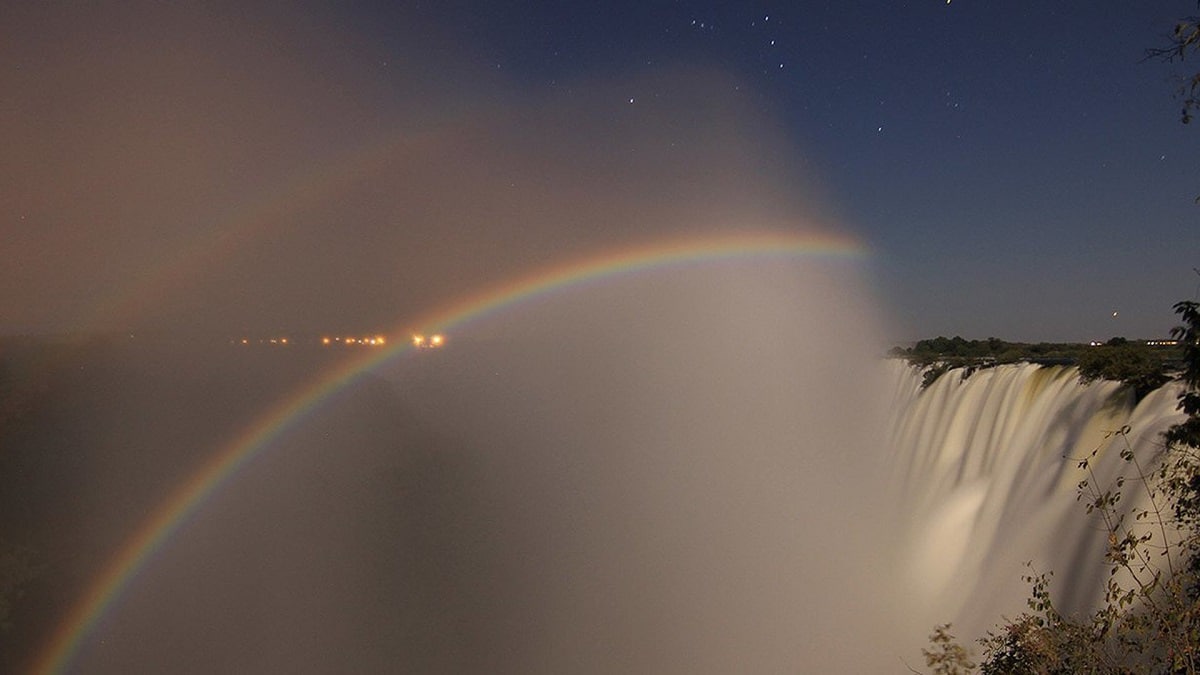
We know that there are different types of quite strange meteorological and visual phenomena that may or may not be displayed depending on how lucky we are and the environmental conditions present at that time. One of the most curious phenomena is the moon rainbow. It is a phenomenon similar to what happens with the conventional rainbow but at night.
In this article we are going to tell you how the lunar rainbow is formed, what its characteristics are and how you can see it.
What is a lunar rainbow?

It is a rainbow created by the light of the moon at night. It forms in the same way as the daytime phenomenon, except that in this case, sunlight does not directly interfere. The lunar rainbow is less luminous than the sun because the moon emits less light than the sun. Sometimes their color is imperceptible to the human eye, and only white arcs can be distinguished. However, with a long exposure camera, you can get very sharp images.
How it is formed
For this colorful rainbow to appear at night, certain very specific conditions must be met, which does not happen very often. The conditions for this to happen are:
- Ambient humidity is high. Generally speaking, in spring and autumn, rain is scarce and high air pressure helps create dense and persistent fog banks. Upon contact with these tiny suspended droplets, the moonlight refracts and breaks up into different colors across the visible spectrum. This effect is called refraction.
- The moonlight is strong enough. The natural satellite of our planet goes through four stages throughout its cycle. For a rainbow to form and be captured by the human eye or the camera, it must be in the full moon phase, when it emits the greatest amount of light. During a supermoon, the odds increase when the object gets as close to our planet as possible. Of course, the sky must be clear.
- Proper light angle. The moon must be very low so that its light hits the fog at a more direct angle. This usually occurs at dusk, the time interval before sunrise and after sunset. Photography and weather buffs mark the day as the blue hour.
Where to see the lunar rainbow

Strictly speaking, rainbows at night can appear in almost any area of the earth, as long as the above requirements are met. However, there are places where high humidity (especially due to the presence of large waterfalls) and clear skies are constant, increasing the chances of such a spectacle.
This is the case of Niagara and Cumberland Falls in the United States and Yosemite National Park, Victoria Falls, on the border between Zambia and Zimbabwe, and Plitvice Lakes in Croatia. Found more occasionally on Kauai, especially during light rains, and Kohala, two territories in the Hawaiian Islands; areas in the Philippines.
Lunar rainbows are also often seen in the cloud forests of Santa Elena and Monteverde. This miracle of light and color is often seen in the mists of Costa Rica's protected areas on full moon nights in winter. Humidity prevails during December and February due to the winds that bring fog to the region from the Caribbean.
Some curiosities

It gets its name because the phenomena are observed on the night of the full moon and are so faint that it is sometimes difficult to see them with the naked eye. Lunar rainbows are formed by the refraction of moonlight and can be seen on the opposite side of the moonlight.
They form at night while full moons form when they are brightest. If before we said that it has to be at night, it is not the only thing necessary to form it. The sky should also be mostly clear, or at least not have too many dark clouds. In addition, the moon must be in its full phase, which is when it is brightest and closest to the horizon. It can be after dark or before dawn, and the humidity is also high, which is a necessary condition for the formation of a lunar rainbow.
If we are in a place with waterfalls, we are more likely to see these rainbows, because it is the light of the moon through a tiny water vapor, and if you start counting the colors of the rainbow, although it is quite difficult, and it is also not easy to distinguish due to the lack of light. In fact, the moon is easier to capture with a camera than with the human eye, rainbows are better seen with a camera, which is difficult to see with the human eye, this is because in night rainbows, the lack of light is what allows them to form. The most recommended are long exposure photos, which is why they are also called white rainbows.
Other curious rainbows
Unlike ordinary rainbows, fog rainbow they are the result of diffraction of light, not refraction and reflection.
Unlike raindrops, the raindrops in fog are so small that they can't reflect color, so they fade and the light turns colorless, creating an albino rainbow. But the fact that it has no color doesn't make it any less interesting.
we also have the brocken rainbow. Although it is called Brocken, what you will see is your shadow, huge and enlarged and projected on the clouds on the other side of the sun. The specter appears when the sun shines behind you and you look at the mist.
You may have trouble recognizing yourself because perspective distorts the shadow; also, if you don't, it's likely to move jerkily because the cloud it's projected onto is moving and its density isn't uniform.
I hope that with this information you can learn more about the lunar rainbow and its characteristics.
I am amazed at this topic, I was really unaware of the existence of the "moon rainbow"... I invite you to continue multiplying such illustrative general knowledge... Greetings